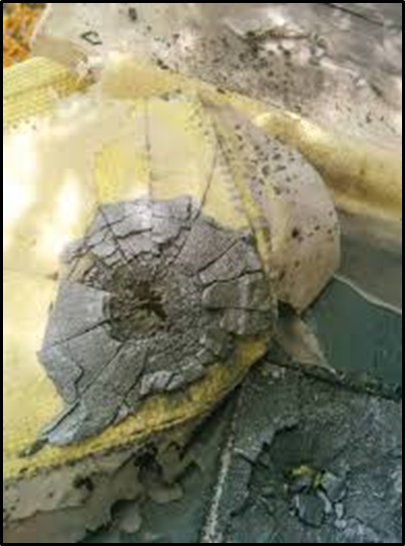Boron carbide (B4C) is often named as “Black diamond”. It is a black crystalline solid almost as hard as diamond. The compound contains 1 Carbon atom and 4 Boron atoms. It is grayish black in color and usually a very hard ceramic material. It is to be noted that Carbon and Boron are placed adjacent to each other in the periodic table, having atomic numbers like 6 and 5, respectively.
The boron carbide nanoparticles are of approximately 40 nm in diameter. It is used across a number of industries due to its hardness, unique interaction with neutrons, and basic properties. Boron carbide nanoparticles have experienced extensive research from engineers and researchers. The mechanical properties of Boron Carbidemake it useful in various applications. This article is focused on Boron Carbide Nanoparticles, its history, properties, manufacturing and applications in different sectors.
History of Boron Carbide Nanoparticles
B4C was discovered in the 19th century as a by-product of reactions involving metallic borides. It was not until 1930 when this material was scientifically studied.
8 Properties of B4C Nanopowder
The properties of Boron Carbide Nanoparticles are described below in detail:
1. Molar Weight of B4C Nanoparticles
The molar weight of the compound is 55.255 g/mol, whereas the density is 2.52 g/cm3.
2. Crystal Structure of B4C Nanoparticles
Its crystal structure is rhombohedral. It is prepared by reaction of boric acid with graphite at 2600 °C.
3. Particle Size Distribution and SSA of B4C Nanoparticles
It has a thin range of particle size distribution, larger specific surface area, and good purity. The Specific Surface Area of Boron carbide Nanoparticles is greater than 42 m2/g.
4. Melting Point of B4C Nanoparticles
The melting point of Boron carbide Nanoparticles is approximately 2350 °C.
5. Boiling Point of B4C Nanoparticles
The boiling point of Boron carbide Nanoparticles is approximately 3500 °C and the hardness is up to 9.3, whereas the bending force is greater than 400 MPa.
6. Reactivity and Stability of B4C Nanoparticles
Boron carbide Nanoparticles do not react with alkali or acid solution. The compound is usually resistant to high temperatures, and it has anti-oxidation properties, high strength, high hardness, high crushing efficiency, high elastic modulus, good self-lubricating characteristics, and larger wear resistance.
The nanoparticles of Boron carbide have a higher cross section of thermal neutron capture, with good anti-radiation performance and excellent neutron absorption properties.
7. Color of B4C Nanoparticles
Boron carbide Nanoparticles are commonly found in Black color.
8. Other Properties of B4C Nanoparticles
Its purity is up to 99%.
The size of the Boron carbide Nanoparticles is around 50 nm.
Production Process of Boron Carbide Nanopowder
The nanoparticles of Boron Carbide are produced by the reaction of boron, which is produced by the thermal decomposition of magnesium diboride in carbon nanotubes. The optimum temperature for the manufacturing of boron carbide nanoparticles is 1150 degrees and is kept for three hours in vacuum. This production method gives good crystallinity.
9 Applications of Boron Carbide Nanoparticles
Boron carbide nanoparticles have a variety of applications in different sectors, nine of them are given below.
1. B4C nanoparticles are commonly employed in the manufacturing of tank armors and they are also used in bulletproof vests because of their hardness and low density.
2. They have also some applications in the nuclear sector such as in control rod, shutdown pallets, and shielding. In the nuclear sector, they are also used for detecting neutrons because of their neutron capturing property. Furthermore, due to their thermal shock resistance and thermal conductivity, they are used in nuclear fusion reactors.

Image retrieved from: https://ceramics.org/wp-content/uploads/2017/07/August2017_Feature.pdf (Reaction-bonded boron carbide for lightweight armor: The interrelationship between processing, microstructure, and mechanical properties, American Ceramic Society Bulletin, Vol. 96, No. 6 - www.ceramics.org )
3. Additionally, Boron Carbide nanoparticles are very suitable for cutting and grinding tools because of their hardness. The nanoparticles of Boron carbide are very hard and most stable. They do not interact with alkali acid solutions because of their stability. These nanoparticles are also used in lapping and polishing applications due to their aggressive nature. The boron carbide nanoparticles have the capacity to absorb neutrons without the formation of long lives radiations.
4. Boron Carbide Nanoparticles are important for advanced technology applications such as ceramic amour applications for personal use and equipment, abrasive for grinding and polishing media, blasting nozzles, semiconductor applications for dielectric barriers, ceramic bearings, nuclear and medical applications.
5. The nanoparticles of Boron carbide are also used for ceramic bearing, wire drawing dies and blasting nozzles due to their remarkable wear resistance. These nanoparticles are very suitable to be used in armor vehicles for the protection against ballistic and projectile threats. This is because of their low specific weight and greater impact resistance.
6. The nanoparticles of Boron carbide are also used for the purpose of coating on different materials such as blade tools and they can also be employed for cutting different alloys, for example, Titanium alloy, aluminum alloy, and stainless steel. These nanoparticles are also employed to make thin film on Ultra high-density disk drives.
7. Furthermore, the tools made from stainless steel are coated using plasma-sprayed Boron carbide nanoparticles for the safety against thermal shocks. The high boron content indicates high refractoriness and good chemical inertness.
8. Nano B4C is also used in the Aerospace sector as a replacement for Be alloys because of their low density, high stiffness, and low thermal expansion. They are also used to strengthen the plastic matrixes as a reinforcement material.
9. The Boron carbide nanoparticles have also applications in high-temperature electronic devices, for example, thermoelastic devices. They are also used as dielectric barriers in semiconductor applications.
Storage of B4C Nanoparticles
The nanoparticles of Boron carbide are usually stored in a cool and dry atmosphere. They must avoid agglomeration because of humidity and should not be exposed to air. They also must not be exposed to high pressure and should not interact with oxidants.
Conclusion
Boron Carbide Nanoparticles have a lot of applications in different sectors because of their unique properties. They are very hard and due to this reason, they are also called black diamond. The particles size is approximately 40 nm and was founded in the 19th century. The applications of Boron Carbide Nanoparticles are found in bulletproof vests, armor vehicles, cutting, grinding, polishing, nuclear and medical sector. Currently, a lot of researches are underway to discover more of its innovative uses.
Read more about B4C on Blografi:


Comments
Post a Comment